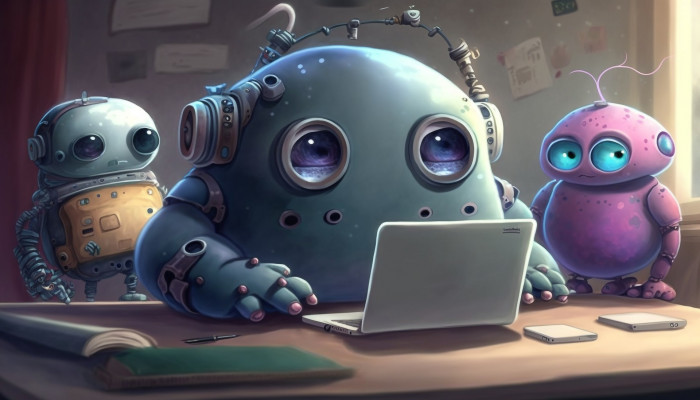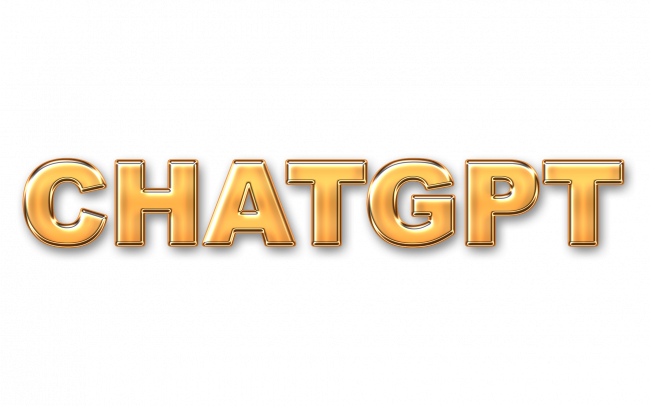Introduction
Are you tired of staring at a blank page, struggling to come up with ideas for your next article? Do you find yourself grappling with writer's block, wondering how you'll ever produce the high-quality content your readers demand? If so, you're not alone. Writing can be a challenging task, even for the most experienced wordsmiths. But what if there was a tool that could help you generate ideas, outline your articles, and even write content for you? That's where ChatGPT comes in.
ChatGPT is a state-of-the-art language model developed by OpenAI that can help you produce high-quality written content quickly and easily. Using advanced machine learning algorithms, ChatGPT is capable of analyzing text prompts and generating human-like responses with incredible accuracy. Whether you're looking to write an engaging blog post, craft an informative whitepaper, or simply generate ideas for your next piece, ChatGPT can help.
In this article, we'll walk you through the basics of using ChatGPT to write articles, including how to set up your environment, generate content, and edit and polish your output. We'll also discuss some best practices for using ChatGPT effectively, as well as some of its limitations and drawbacks. By the end of this article, you'll have a solid understanding of how ChatGPT works and how it can help you write better content in less time. So, let's get started!
Understanding the Basics of ChatGPT
Before we dive into using ChatGPT to write articles, it's important to understand the basics of how the tool works. At its core, ChatGPT is a machine learning algorithm that has been trained on a massive corpus of text data, including books, articles, and websites. This pre-training process enables ChatGPT to understand the nuances of language, including grammar, syntax, and context.
But that's only the beginning. In order to use ChatGPT for specific tasks, such as article writing, the model must be fine-tuned on a smaller dataset that's relevant to your use case. This fine-tuning process involves training the model on a specific task, such as generating text based on a given prompt. By fine-tuning ChatGPT in this way, you can ensure that the output is tailored to your needs and of higher quality.
To use ChatGPT for article writing, you'll typically provide the model with a text prompt or set of keywords, and the algorithm will generate a piece of content based on that input. The format of the input can vary, depending on your specific use case. For example, you might provide a complete sentence or paragraph as a prompt or simply a list of bullet points outlining the main points you want to cover in your article.
Ultimately, the key to understanding the basics of ChatGPT is to recognize that it's a highly sophisticated machine learning algorithm that can be trained to perform a variety of different tasks. By providing the model with relevant input and fine-tuning it to your specific use case, you can generate high-quality written content quickly and easily. In the next section, we'll explore how to set up your ChatGPT environment so you can start generating content right away.

Setting up Your ChatGPT Environment
Now that you understand the basics of ChatGPT, it's time to set up your environment so you can start generating content. The first step is to choose the appropriate API or software package that will enable you to interact with the ChatGPT model.
There are a variety of different options available, depending on your specific needs and technical expertise. For example, you might choose to use OpenAI's GPT-3 API, which is a cloud-based service that provides access to the full range of ChatGPT's capabilities. Alternatively, you might opt to use one of the many open-source software packages available, such as Hugging Face's Transformers library or GPT-2 Simple.
Once you've chosen your API or software package, it's time to configure the parameters for your use case. This includes specifying things like the maximum length of generated text, the temperature of the sampling process, and the number of times the model is run to generate output. These parameters can have a significant impact on the quality and coherence of the generated text, so it's important to experiment with different settings to find what works best for your needs.
It's worth noting that setting up your ChatGPT environment can be a somewhat technical process, especially if you're working with open-source software packages. However, there are many resources available online to help guide you through the process, including tutorials, documentation, and community forums. With a little persistence and a willingness to learn, you should be able to set up your environment and start generating high-quality content in no time. In the next section, we'll explore how to use ChatGPT to generate content based on a text prompt.
Generating Content with ChatGPT
Now that you've set up your ChatGPT environment, it's time to start generating content. There are a variety of different content generation modes available, each of which is suited to different types of use cases. For example, you might use text completion to generate the next sentence in a paragraph or summarization to create a brief overview of a longer piece of content.
One of the keys to getting the most accurate and relevant results from ChatGPT is to provide the model with a high-quality text prompt. This can be a complete sentence or paragraph or simply a list of keywords outlining the main points you want to cover. It's also important to be as specific as possible in your prompt in order to give the model a clear idea of what you're looking for. For example, instead of asking for "tips for starting a business," you might ask for "specific steps for registering a business in California."
In addition to providing a high-quality prompt, there are a few other tips that can help you get the best results from ChatGPT. First, it's important to experiment with different settings for the model's parameters, such as the temperature of the sampling process or the number of times the model is run. This can help you find the settings that work best for your specific use case.
Another tip is to use human editors to review and refine the output generated by ChatGPT. While the model is highly sophisticated, it's not perfect, and there may be errors or inconsistencies in the generated content. By having a human editor review the output, you can ensure that the final product is accurate, relevant, and high-quality.
Ultimately, the key to generating content with ChatGPT is to approach it as a tool that can augment and enhance your own skills and expertise. By using ChatGPT to generate drafts, summaries, or other forms of content, you can free up more time and energy to focus on the aspects of content creation that require a human touch. In the next section, we'll explore some of the potential use cases for ChatGPT in article writing and content creation.
Conclusion
In conclusion, ChatGPT is a powerful tool for generating content that can help writers, marketers, and businesses of all sizes save time and resources while enhancing the quality of their content. Whether you're looking to create blog posts, social media updates, or marketing materials, ChatGPT can help you generate accurate, relevant, and engaging content with minimal effort. By understanding the basics of ChatGPT and following best practices for setting up and using the model, you can unlock its full potential and begin using it to create high-quality content that engages and informs your audience.
As with any tool, there are limitations and challenges associated with using ChatGPT. It's important to approach the model with a critical eye and be willing to refine and edit the output it generates. However, with the right approach and mindset, ChatGPT can be an incredibly valuable asset in your content creation toolkit. Whether you're a seasoned writer or just starting out, there's no denying the power and potential of this cutting-edge technology. So why not give it a try and see how it can help you enhance your content and take your writing to the next level?















